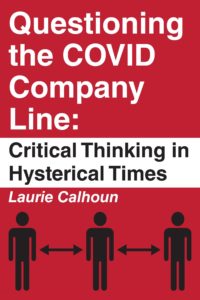Over the next decade, the US government plans to spend nearly $1 trillion on its nuclear arsenal—with the actual cost certain to run even higher than that. The huge outlay is driven in part by the sheer size of America’s doomsday-weapon collection, which comprises an estimated 3,700 deployed or stockpiled nuclear warheads, not counting another 1,500 that are purportedly “retired” and awaiting dismantlement.
Though Americans have been conditioned to think it’s reasonable to maintain such a large arsenal, the idea that thousands of warheads are required to deter nuclear aggression rests on flawed thinking about the nature of deterrence. While defense contractors and military bureaucracies enriched by the status quo will tell you otherwise, the truth is that an adequate arsenal of nuclear warheads can be measured not in thousands, but mere dozens.
During the Cold War, two successive doctrines guided nuclear war strategy. First came Massive Retaliation, which rested on the threat of a disproportionate, devastating nuclear response to either conventional or nuclear aggression. That gave way to Mutual Assured Destruction (MAD), in which any nuclear attack was guaranteed to escalate to the point where both countries are completely destroyed.
Both doctrines shared a cornerstone premise—that effective, credible deterrence requires the capability to completely destroy the opposing country. That’s the wrong yardstick. Deterrence is achieved by the ability to impose an intolerable level of retaliatory destruction on a country that’s contemplating a nuclear first-strike—a threshold far lower than border-to-border annihilation.
For perspective, in World War II, Russia and China each suffered roughly twenty million total civilian and military deaths. The same unfathomable fatality counts that spanned several years in World War II can be achieved in mere minutes with only twenty modern nuclear warheads—fifteen striking Russian cities and only five hitting the more densely-populated cities of China, according to calculations by University of Maryland professor Steve Fetter.
If the United States chose to opt against the morally-repugnant targeting of population centers with little military significance (that is, cities similar to Hiroshima and Nagasaki), a second-strike could instead vaporize the enemy’s economy, targeting power generation, refinery complexes and vital ports (though even these nuclear attacks would inflict civilian death on a huge scale, not only from the blasts but also the economic destruction). Here, Fetter calculates 100 detonations would suffice.
The fatalities and destruction associated with either of those two targeting scenarios that pursue some level of societal devastation—so-called “countervalue targeting”—are well beyond what any foreign ruler would consider tolerable, suggesting that the anticipation of even one or two second-strike warheads would be sufficient to deter an adversary from striking first.
Note, this approach to deterrence, which focuses on the power to retaliate and inflict “intolerable” destruction, does not require adversaries with high moral character. It matters little whether an opposing ruler regards his citizens with loving empathy or depraved indifference. Rulers are ultimately driven by self-interest—and no leader can expect his hold on power to survive a nuclear gamble that brings about the vaporization of cities or irreplaceable economic assets in his own country. (Indeed, there may be no “power” to hold on to.) As political scientist Kenneth Waltz wrote in a milestone 1990 paper that promoted the peacekeeping value of nuclear weapons while making the case that small arsenals are sufficient, “Rulers like to continue to rule.”
Given these realities of deterrence, the size of an adversary’s nuclear arsenal has no bearing on the appropriate size of America’s. “So long as two or more countries have second-strike forces, to compare them is pointless,” wrote Waltz. “If no state can launch a disarming attack with high confidence, force comparisons become irrelevant…beyond a certain level of capability, additional forces provide no additional coverage for one party and pose no additional threat to others.”































